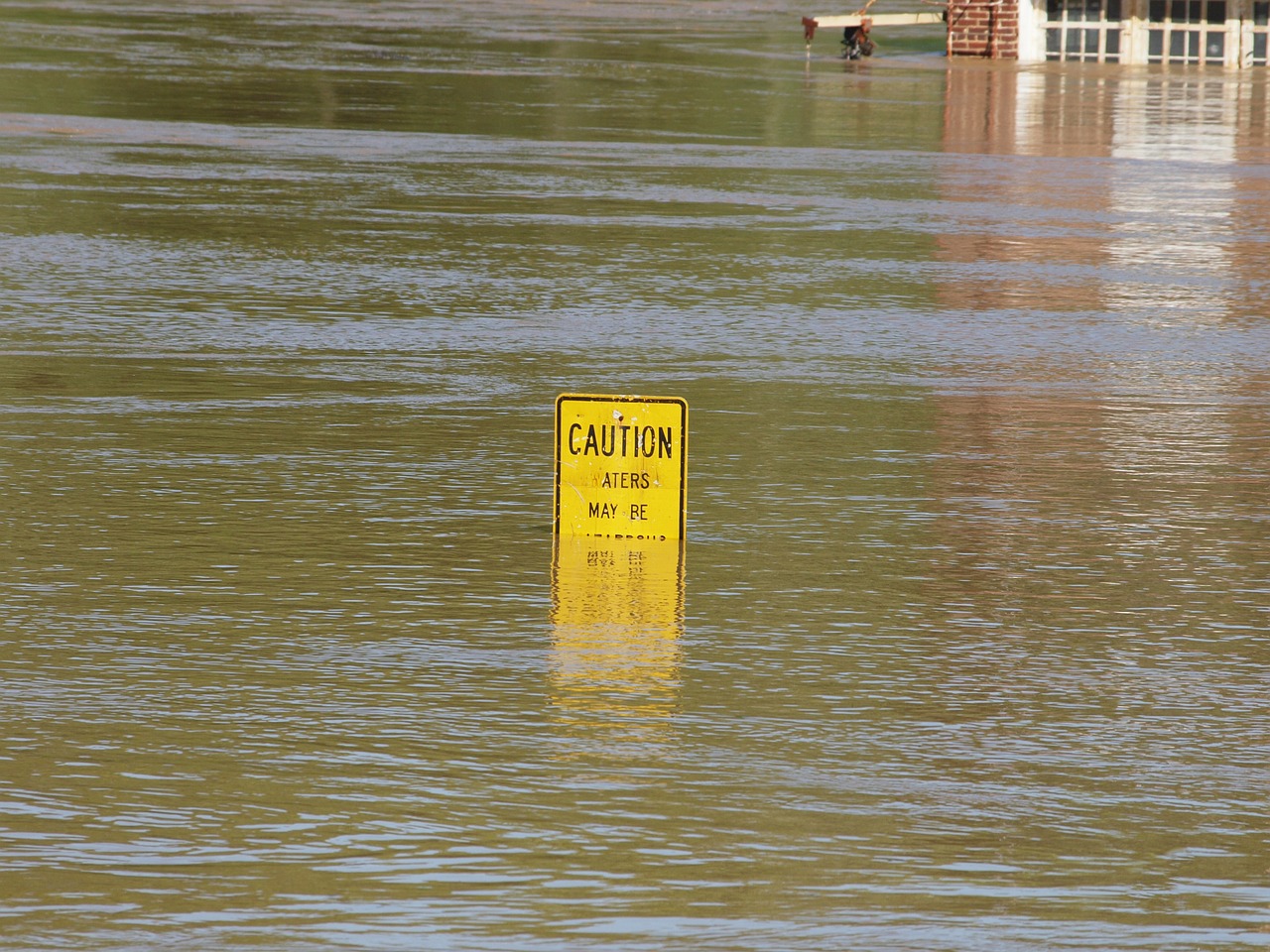
"Flooding is one of the biggest concerns for homeowners today. It’s something that can literally happen to anyone. And the costs can be devastating: Even one inch of water can cause $25,000 worth of damage, according to the National Flood Insurance Program and FEMA. With major natural disasters like Hurricanes Harvey and Irma still fresh in people’s minds, you can bet that a good percentage of your customers will be interested in buying flood insurance. Here are some specific topics independent agents can discuss when explaining flood insurance to prospects.
What Flood Insurance Does and Doesn’t Cover
Flood insurance covers two key things — a home’s structure and the contents within it, the team at ValuePenguin writes. Structural refers to the building’s foundation, electrical, plumbing and central air systems. Contents includes such items as furniture, electronics and appliances. In terms of coverage, real estate writer Dona DeZube at HouseLogic writes that flood insurance purchased from the National Flood Insurance Program covers a home’s structure up to $250,000 and contents up to $100,000. There are exceptions and some things aren’t usually covered with flood insurance. For instance, if an item belongs in a safety deposit box (e.g. cash, stock certificates or precious metals), it’s not covered. Spaces that are below ground level, such as a basement or crawlspace, will have limited or no coverage because these areas are naturally susceptible to water damage. Even a walkout basement won’t be covered for most personal property including clothing, kitchen supplies and electronics, as well as bookcases, window treatments, carpeting and tile, DeZube notes.
Pervasive Myths
One of the biggest myths is that individuals with homeowners or renters insurance are covered and don’t need flood insurance. But this simply isn’t the case. Homeowners and renters insurance doesn’t typically cover flood damage. In fact, flooding is almost always excluded on these types of policies, and they don’t cover damage or other losses caused by flooding, Bryan Ochalla at QuoteWizard points out. So this is definitely something that potential customers need to know about. The other is the myth that flooding is only something that people living in high-risk areas have to worry about. According to FEMA, however, more than 1 in 5 flood claims actually come from properties outside of high-risk flood zones. The Insurance.com team explains that the main reason why roughly only 12 percent of American homeowners have flood insurance is because they think they’re in a location that can’t be affected by flooding. And it’s this false sense of security that comes back to haunt many people. “Everyone lives in a flood zone,” the Hometown Insurance Agency writes. “In high-risk areas, you have a 1 in 4 chance of experiencing a flood over the life of a 30-year mortgage. But the truth is that you can live miles away from water and still be at risk of flooding.” And the threat level is increased dramatically whenever there’s a natural disaster. The Insurance Information Institute confirms that 9 out of 10 natural disasters in the US involve some type of flooding. It’s dangerous, and expensive. Hurricane Harvey alone caused $125 billion worth of damage in 2017, Kimberly Amadeo, US Economy expert at The Balance writes. Plus many homeowners who lacked flood insurance took a major financial hit. In fact, fewer than 20 percent of those affected were covered, economic writer Roger Yu reports. The bottom line is that wherever it rains, it can flood. This isn’t to say that you should use scare tactics to persuade your prospects, but they should be aware of the very real dangers that are out there. A big part of helping them grasp the full implications is to bust these common myths.
Main Selling Points
There are three key benefits that you’ll want prospective customers to be aware of. First, the MetLife team explains that those with flood insurance will be compensated for all covered losses (up to $250,000 for residential occupancies and up to $100,000 for contents) even if the president doesn’t declare the situation a federal disaster. FEMA confirms that while most federal disaster assistance first requires a presidential declaration, this is not the case with flooding: flood insurance claims are paid even when a disaster is not declared. This knowledge can give customers peace of mind that they’ll be covered regardless. Next, there’s the fact that there’s no repayment involved. Unlike some other types of federal disaster relief packages, a person will be paid in full for their losses. This is obviously preferable and can assuage the economic hardships that individuals are likely going through in a post-flood situation. Finally, flood insurance can be fairly inexpensive. Ronald Agrella at InsurMatch writes that the average cost of flood insurance annually is $700, which comes out to a little over $53 a month. It can cost considerably less for individuals in low-risk areas.
Common Objections Customers Might Have
You’ll inevitably face some degree of friction when attempting to sell flood insurance to certain prospects. The team at Wright National Flood Insurance discusses some objections that people typically have and how to effectively respond to them. Perhaps the most common is that someone doesn’t live in a high-risk flood zone. But as we already mentioned, flooding can happen anywhere it rains, and at least 20 percent of claims come from people who are located in areas considered either low or moderate risk. Another objection is that a prospect lives in a neighborhood that has never seen flooding, so there’s very little concern that they would be affected by heavy rain. But “new roads and housing developments reduce the land’s natural ability to absorb water,” Wright Flood says. “Runoff can multiply as much as six times when land is paved over.” So the risk is very real for those living in newer developments. Even if flooding hasn’t been a problem in the past, it’s always a factor that should be accounted for. A final objection is that a person thinks their home insurance policy is enough. But as we’ve seen, standard home insurance doesn’t usually cover flood losses. This means that person is essentially on their own if flooding occurs.
The Impact of Climate Change
There’s one additional topic to discuss and that’s how climate change can increase the chances of flooding. Studies show that the sea level is rising significantly, which puts many areas at risk, especially coastal communities, Laura Parker, staff writer at National Geographic reports. She says that over 90 coastal communities in the US are already battling chronic flooding, and that number is expected to rise to more than 170 in less than 20 years. There’s more: 23 out of America’s 50 states have at least a portion of their population living in coastal zones, which creates some serious flooding concerns, the team at Priceonomics writes. Florida is at the biggest risk, with California, Washington, New York and Massachusetts not far behind. In terms of specific cities, New York City is most at risk to rising sea levels. Global warming is behind this trend, according to the Associated Press. The increased risk of flooding endangers millions of people not just in the US but around the world. Besides issues that rising sea levels can create for coastal communities, they point out that flooding rivers can have catastrophic results. In other words, people don’t have to be located on a coast to be affected. Again, you don’t want to resort to fear to sell flood insurance, but climate change is definitely a factor and something that is likely to create more flooding than in the past. If you’re an independent agent operating in a coastal community, near a river or in any area that’s flood prone, you’ll want to educate potential customers on this trend.
Helping Prospects Understand Flood Insurance
We’re seeing a discrepancy between the number of people with flood insurance and the number of people who should have it. In fact, the Rocky Mountain Insurance Information Association writes that as many as 3 out of 4 buildings in the US located in high-risk areas aren’t currently covered. And this is problematic because virtually everyone faces at least some level of risk, especially as sea levels continue to rise and rivers become more prone to flooding. As an independent agent, it’s your job to help prospects understand the specifics of flood insurance. By breaking down the fundamentals, dispelling common myths, emphasizing the benefits and overcoming objections, you should be able to effectively inform them, generate more quality leads and expand your customer base. Images by: PublicDomainPictures, Carol Colman, Paul Brennan"
Talk to an expert
Contact us
